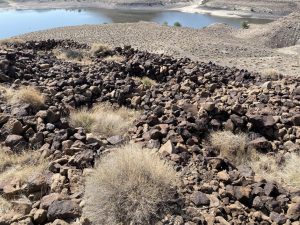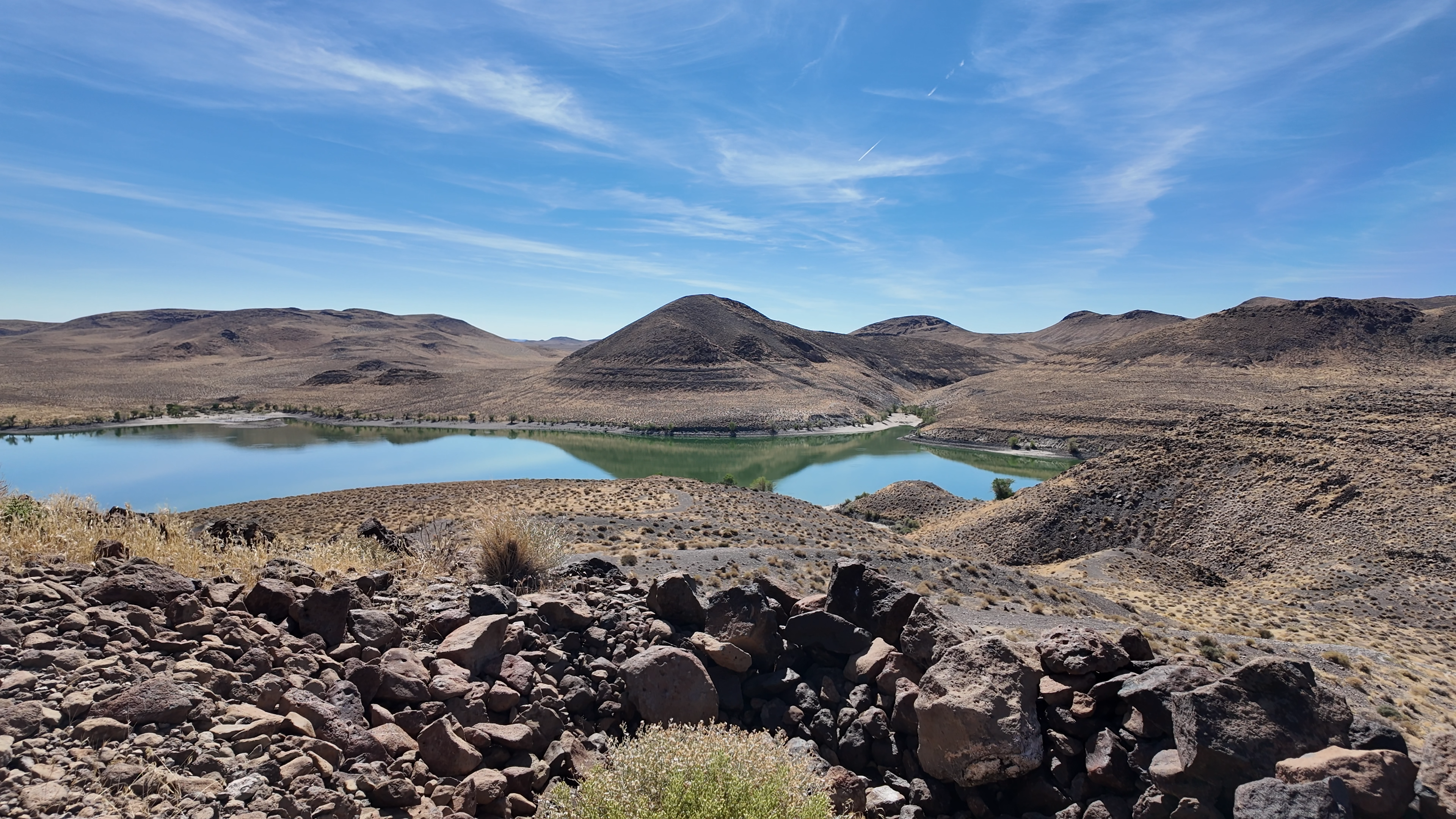
Looking down into several of the conical pits. Some of these pits have one large rock left in the center. Some archaeologists suggest they might have served as seats.
The Hamilton Family Archaeological Preserve sits high on a talus bluff overlooking the Lahontan Reservoir in western Nevada. It lies within the ancestral lands of the Numu (Northern Paiute). The site was first recorded in 1991 by Dr. Eugene Hattori, the curator of anthropology at Nevada State Museum. Hattori described it as “a series of seventy-five to one hundred pits excavated into talus slope.”
The conical pits are captivating, but it is the almost complete omission of artifacts that make this site even more intriguing. During a recent survey, archaeologists four only four artifacts. These indicate that stone tool-making, hunting, and plant processing took place here during the Late Archaic Period (1,200-600 years ago). Aside from these few clues, we do not know for certain what this site was used for.
The combination of unique features and the presence of buried deposits at this site hold potential for contributing new understandings about the western Great Basin’s precontact lifeways. The Conservancy purchased the nearly 22-acre parcel in December 2022. It is the Conservancy’s fourth Nevada preserve.
Take a virtual visit to the Hamilton Family Archaeological Preserve with Western Regional Director Cory Wilkins and Western Regional Field Representative Linsie Lafayette.




